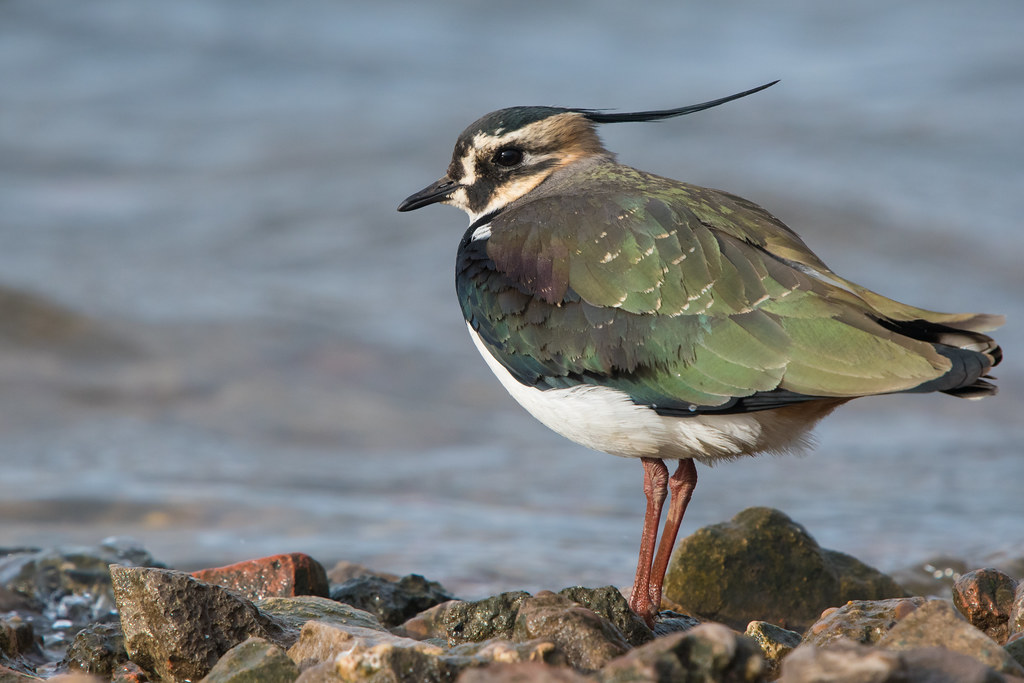
Tim writes: if Lapwings are being watched by a predator (or a human) they sometimes pretend to have a nest in a different area to where their actual nest is. Because of this Lapwings were thought to be deceitful birds and the collective noun is a deceit of Lapwings. Chaucer said that the bird was full of treachery (“ful of trecherye” but the original meaning was trickery not treason) in the Assembly of Fowls, and Plover was a 17th century name for prostitutes.
Unfortunately this deceit hasn’t paid off and Lapwings have done rather badly at the hands of man. Historically its eggs were harvested for the table but changes in farming practice have resulted in a 53% population decline in the last 25 years. The changes that have affected them most is specialisation as Lapwings prefer mixed farming, nesting on arable put feeding on pastures, whereas most farms now specialise as either arable, beef or dairy. The large arable prairies in the south and east don’t leave many feeding pastures. Another change is the switch to autumn sown cereals, which means they don’t have the bare fields in spring to nest in as by March the crop is too tall for nesting.
[registration_form]
The last 3 or 4 years have been better for Lapwing in south west Cambs, as teher has been a significant increase in spring cereals and february downpours to create wet patches……Also a result of some farmers tryign to grow beet on heavy clay… because far fewer grow Rapeseed now (neonics ban….)
In and just post war my parents were great foragers. We had blackberries, mushrooms and, I’m pretty sure, Peewit eggs in season
The field behind our house was ploughed but supported many Lapwing nests. Just a few eggs taken and never a whole clutch. That was 70/75 yrs ago not the 25 that showed the 53% decline. In the autumn the gleaners arrived to harvest the fallen grain after the binder had gone. I never knew whence they came or went. Then the Lapwing flock built up during the winter.
Richard – indeed. Farmland birds have been declining for much longer than the liftime of our current monitoring schemes.
I’ve told the story before of being out birdwatching n the Nene Valley and seeing a flock of Lapwing in the sunshine when another birder told me that he used to borrow a baker’s tray and he and his brother could fill it with plovers’ eggs in an afternoon in the fields above the valley. Same sort of time that you are rembering i guess. And that harvesting probably wouldn’t have been a very major factor in the decline of the species.
In The Birds of Norfolk published in 1870, Henry Stevenson wrote: “At the present day it is only through the ‘tales of a grandfather’, or the traditional lore of some octogenerian, that one can arrive at any conception of the former abundance of this species”.
It is reported that at Potter Heigham a single egger in 1821 gathered a hundred and sixty dozen eggs in the adjacent marshes and that every week a Yarmouth game dealer despatched “between six hundred and seven hundred eggs to the London and other markets.
One can only imagine!